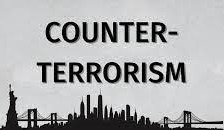EFFICIENCY OF COUNTER‐TERRORISM STRATEGIES: INTERNATIONAL AND NATIONAL LEGAL REGIME
Keywords:
Terrorism, Violence, Criminal Financing, Peace, SecurityAbstract
Terrorism and financing both interlinked with each other and considered as an emerging
danger to political/ social and economic stability around the world. Though there is no
universal accepted definition of this term “terrorism”, but it can be assumed as a manner of
intimidation that is used or threatens to utilize violence for the purpose to extent fear. Current
terrorist and criminal financing fear as well as violence is differentiated in law from
“ordinary” violence by the typical terrorist “trio”. The contemporary terrorism and criminal
financing employ different kinds of violence and use to target civilians, military personal and
officials from State and Central government. There are big challenges to countering terrorism
are noting new and have a long history itself. The primary vicious technique of dispersal
terror employed by virtually all such sets at the time was targeted assassination, which the
potential for political martyrdom and also carried with it serious personal risk. The terrorism
activities and targeted assassination is somehow separated from other criminal acts, as in the
case of terrorist activities because they target the persons who act in an official capacity
which signified “a deep and personal commitment to a cause that may inspire others and
epitomised the ‘code of honour’ by sparing innocent citizens and this arguably made terrorist
assassination a more benevolent form of violence than any civil war”.









